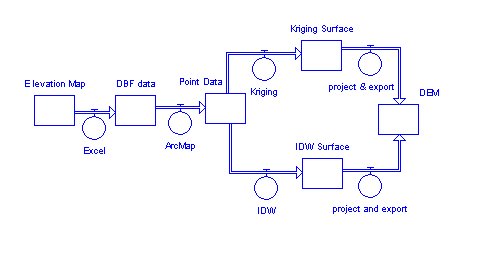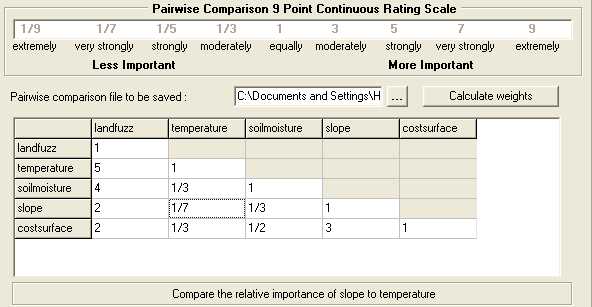B. Landuse map was generated by RECLASS function in ArcMap 9.0. A grid file of landuse was created by exporting data, giving column as 1100, row 1450. This will automatically generated a cell size as 20 meters for the raster image. Convert landuse raster image into ARCII format(test file) using ArcToolbox, then this data is ready to import into IDRISI.
C. Elevation data was recorded from secondary elevation map. The procedure of creating DEM data is shown on following diagram.

2. Multi-criteria Development
A. Constraints
The

 Previous
Home
Next
Previous
Home
Next